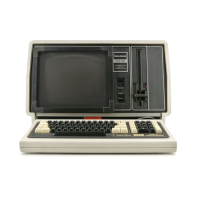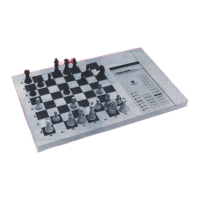OPERATION
Only
16
characters
at a time can be
printed
in the double-size
mode.
If
you exceed 16 characters,
the printer
automatically
wraps
around
to
the next
line and reverts
to
the
32-character/line
mode.
Note:
LLIST always
uses the
32-character/line
mode.
For details on using
the double-size
mode (e.g., how
to
print long
messages in the
double-size
mode), see Control
Codes, later on.
Lower
Case Characters
Although the Quick
Printer II cannot
produce
the TRS-80
Video
graphics
characters, it
can
produce
both
upper
and
lower case letters,
plus many
other symbols. See Printable
Characters
for a
complete
listing.
Here
are a couple of ways
to use this capability
from
LEVEL II
BASIC.
1
.
You can enter the lower-case characters
from the
keyboard when
you are setting up messages and values to be LPRINTed.
Even
though
the
Display will show a capital letter,
it will be
stored in
memory as lower-case.
To
enter a lower case character from
the keyboard,
hold down
ESD23
ke
y
while hitting the key
(just the opposite from
a
normal typewriter).
For example, type
in the
following line, holding
down
the
EHBJ
key
wherever you want
a
lower-case letter:
168
LPRIMT'Press SHIFT for
I.e."
You will
see
the lower case letters
when you LLIST
the line,
or
when you RUN it
—
even though the line
appears
on the Display
as all
capitals.
2.
You can
LPRINT the ASCII
codes for the
lower case
characters,
using the CHRS function. For
example:
188 FOR
]%
=
97
TO j?2
m
mm
twam;'
-,
m fitXT
Note: Be
careful about using lower-case letters outside
of quotes
in your
BASIC programs.
There
are some cases where
this will
produce a
hard-to-find syntax
error. For example, the statement,
sin
rriiiificuf
HJ
won't work
if
you used a
MlllPli
-@
instead of
a simple
@.
12

